A BRIEF LIFE OF MARGRIT MATHILDE SOKOLIC (nee CORDES)
(By
her husband Franko Sokolic)
Aged 20 years
Behold! A handmaid of the Lord
Picture from Margrit’s childhood prayer
book, which she always remembered.
In Germany
Margrit was born in Wattenscheid, Germany, on 22 July
1936, the feast of St. Mary Magdalene, and baptised on 2nd August 1936. She was
the first child and only daughter born to Klara Cordes and Wilhelm Cordes, a
German soldier, who was reported missing in action in Russia in June 1944, when
Margrit was 7 years old. Margrit clearly remembered her father as a kind and
loving man, very jovial who played music and laughed often.
Klara and Wilhelm
Cordes.
In 1942, she and her brother Dieter were taken by their
mother to Ebersbach, a small village in the eastern part of Germany, to escape
the wartime bombings. They were accompanied by Margrit’s grandmother, two aunts
and Margrit’s cousins Gerd, Walter and Renate. At the close of the war, and
fleeing the Russians, the group trekked westwards across the country, to return
to their home towns. The journey took 16 days, by foot and sometimes by train.
They travelled through forests, sleeping out in the open, foraging for food.
Margrit remembers them sleeping in a huge roofless building among hundreds of
people. The party of 6 children, including Margrit’s baby cousin Ulli who was
born in Ebersbach, and the four women travelled through Dresden, seeing
first-hand the awful, almost total destruction, wreaked on that city. They
travelled on, always at risk from various military group, until they were eventually taken in at an American
refugee camp.
15 years.
When Margrit, her brother and mother, finally returned to their home town, Herford, they found their apartment taken over by strangers. The town authorities subsequently allocated one of the apartment bedrooms to the three of them. Life was difficult during the first few years after the war ended and Margrit’s mother had to have her missing soldier husband officially declared dead in order to receive a widow’s military pension. In 1947, Margrit lived for a year with her aunt Elizabeth in Dusseldorf and it was there that Margrit was saved from drowning by her cousin Renate while they were swimming in a quarry pool, an incident never forgotten. Years later, in 1961, when we had been married for four years, Margrit invited her cousin to Cape Town. While resident in our home, Renate met her future husband, Freddie, a school friend of mine. They were happily married, settled in Paarl nearby Cape Town and became parents of six children. Margrit was 17 years old and still living in Herford, when her mother introduced her to a 27 year-old German citizen. Margrit’s mother took a liking to him and from then on, Margrit was directed by her strong-willed mother towards an engagement and eventual marriage.
Arrival in Cape Town
When the German man emigrated to South Africa, Margrit
travelled to Cape Town by sea on the ship Bloemfontein Castle. She arrived on
13 June 1955 aged 18 years, and found accommodation in Cape Town at the “Villa
Maria,” a residence for young ladies run by Schoenstatt nuns. On arrival in
Cape Saying goodbye to her mother in Germany, May 1955.
Villa Maria Gardens, June 1955.
Town, Margrit immediately broke off the unwanted
engagement. Her relief and happiness at her decision is portrayed in the
photographs taken of her in the Villa Maria gardens in June 1955. The first
result of Margrit’s breaking the forced engagement was to receive from the man,
a detailed account of every penny he had spent on her travel costs to South
Africa. When we met, she was paying this back at ₤5 a month from her small
salary. Thereafter, our combined salaries quickly paid the debt. The second
result was an outpouring of anger in her mother’s letters to her. This
continued until Margrit threatened to stop correspondence with her mother if
the subject was not dropped. Margrit’s mother complied and thereafter, for
years, Margrit faithfully wrote to her mother every week!
Margrit and I meet
Margrit and I met eight months after her arrival in Cape
Town. Greg Krasner, a Jewish friend and fellow student at the University of
Cape Town, at his parent’s insistence, wanted to meet a young Jewish girl, with
a view to marriage. He expected to meet her on Clifton beach. So, on Saturday
18 February1956, Greg and I travelled to Fourth Beach Clifton. As we set foot
on the beach, he said to me “Let me introduce you to a nice German girl”. We
walked across to a group and I sat down next to my future wife. We spoke for a
short while and then Greg and I walked further along the beach. When we
returned, Margrit had left. We came back to Clifton beach the next day, Sunday.
Margrit was there again. We invited her to accompany us to a symphony concert
that evening and Margrit joyfully accepted. Our party comprised my sister Mavis
and her fiancé Vincent, Greg, Margrit and me. We had not booked seats for the
concert and on arrival, we found that it was fully booked. The five of us sat
in the car and Margrit sang German lieder for us in her beautiful soft contralto voice.
February
1956: Greg, Mavis, myself and Margrit on Llandudno beach, a week after we met.
Sometime afterwards, Margrit and I
visited Greg’s home and I watched and listened as the attractive young German
girl sang for us, accompanied on the piano by our Jewish hostess, Greg’s
mother.
I can recall, as if it were yesterday, visiting Margrit at “Villa Maria” residence. I rang the bell and said to the nun who came to the door “Miss Margrit Cordes please”. I waited in the reception area and then heard her footsteps approaching along the passageway. She came into view - a wonderfully attractive 19 year-old girl with shining eyes, so clean looking, so well-groomed, so modestly attired. My great discovery was yet to come.
Her outward appearance was matched by her inward disposition. As the weeks went by I realised that I had met a very unusual young lady. Her gentleness, her kindness, her purity of heart completely won my affection. I marvelled at her charity of thought when the attitude or opinion of somebody was discussed. Margrit always found something good to say about that person, no matter how disreputable they seemed to be.
I asked her if she was a Catholic. She said “yes.” And I
expressed my satisfaction by saying “So am I”. This considerably helped in our
courtship. About this time a tearful Margrit told me the whole story of her
escape from the arranged marriage.
For Margrit’s 20th birthday (22 July 1956) I gave her a
brooch in the form of a silver rose. And for our first Christmas together in
1956, I presented her with a lady’s wristwatch. She wore both these gifts on
special occasions.
Margrit wearing the silver brooch.
With my Christmas gift she wrote the following note:
“My dear Frank, I was looking forward to this day so much
to give you this surprise. Believe me, Frank, it is given with the warmest
heart. If God would ask me the highest price for your happiness and safety of
your soul, I would give it to Him. With all my love, Margrit.”
What was she like?
In her demeanour, Margrit was entirely natural. She
hardly ever wore jewellery or make-up. Her handbags were packed with religious
literature for distribution and for her own use. She was always modestly
attired and limited herself to a small selection of clothing. Never an ill word
issued from her lips. She avoided watching television. She had no liking for
alcohol and I had never known her to drink it. She also had an aversion to
cigarette smoke, particularly when she was pregnant. She made no use of a
ladies’ hairdressing salon. Now and again, she had her hair trimmed in private
homes. She became vegetarian.
She only obtained her driver’s licence late (in fact while she was pregnant with Angela, our 6th child, in 1968), and alternated driving with me on long journeys to holiday destinations.
Looking at the picture presented by the world of radical feminism, we can say of this true feminist,
- she was honoured by her husband and her children
- she was the heart of the family
- she was a talented needle-woman
- she wore only women’s clothing
- she neither shopped nor toiled on the Sabbath day
- she prayed publicly against the crime of abortion
- she covered her head in the presence of her Lord
- she was the woman of Proverbs 31.
I thank Almighty God for the blessing and privilege given
to me to have had this saintly woman as my wife.
Marriage
A special awareness that we would marry, grew between us.
There was no proposal. On 17 January 1957, we simply made public the unspoken
decision that we would be married. We set the date for Saturday 25 May 1957.
There was no engagement ring since we followed German tradition and purchased
our wedding rings signalling engagement by wearing them on the right hand until
our wedding day, when the rings were placed on the left hand. My name and date
of our wedding were inscribed on Margrit’s ring and her name and date of our
wedding were inscribed on mine. The evening before our wedding day, Margrit and
I purchased flowers for the altar. There was no “bachelor party” for me, since
I despised them.
Vincent Scott (Best man), Karen Zimmerman (Bridesmaid),
in Villa Maria Chapel after our wedding ceremony.
We were married on a beautiful morning in May, in the Villa Maria chapel, Kloof Street, Gardens, by nuptial mass. Rev. Fr. Henry Banahan was the priest. The Schoenstatt nuns sang Schubert’s German Mass D872. A friend recalled how, years afterwards, when Margrit told her about the singing of that mass at our wedding, and having told Margrit that she was not familiar with the Schubert Mass, “over the telephone Margrit sang the “Sanctus” to me in a beautifully modulated voice.”
Margrit was very anxious that we should marry before her
mother visited Cape Town. From her experience in Germany, and her mother’s
reaction to the breaking of the earlier engagement, she feared that her
mother’s presence in Cape Town, before we married, might result in some
occurrence which would interfere with our marriage plans. I was less concerned
about this possibility, but Margrit was absolutely insistent that we marry
before her mother’s proposed visit. So we were married on that Saturday 25 May
1957. Margrit was 20 years old and I had just turned 24. It had been necessary
to obtain Margrit’s mother’s consent for her to marry because Margrit, being
under 21 years of age, was regarded as a minor in terms of South African law.
Her mother had sent her written consent, (signed in Herford on 7 March 1957)
which is why I was not as fully convinced of her opposition to our marriage as
Margrit was.
Wedding day, May 1957, aged 20, with my parents.
Our wedding reception was held at the Milnerton home of
my parents. The following morning, Margrit and I attended Holy Mass at the
church of Our Lady of Good Hope, Sea Point, as MR. and MRS. Sokolic. We spent a
week’s honeymoon at Wilderness hotel and thereafter, took up residence in a
flat attached to my parents’ home.
Housewife and mother
Margrit continued employment until December 1957 when she
resigned from her position as typist, clerk and interpreter at Spilo, a German
owned business, as she was expecting our first child. While working there she
was commended for her skill as a German/English translator. She fulfilled her dream
by spending the rest of her life as housewife and mother, in a very happy
marriage. Her mother arrived in Cape Town in January 1958, eight months after
our wedding. We had paid the expenses for her boat trip. She returned to
Germany after a three week stay. Over various visits through the years,
Margrit’s mother spent about 6 years with us before her death in 1989. On 29th
May 1958 our first child, Stephen, was born which Margrit described as one of
the happiest days of her life. In May 1960 our second child, Ivan, was born. In
May 1961 we moved into our home at 4 Pienaar Road Milnerton, where we lived
with great happiness for the remainder of our marriage. In 1971 we had an
additional four rooms and two bathrooms built on to our home. During all this time,
we were in complete harmony. It was not possible to have a difference, of any
kind, with her, because of her irresistible goodness! Eight more children were
born to us. Catherine (1962), Franko (1963), Mary (1964), Angela (1969), Andrew
(1970), Vincent (1972), Joseph (1974) and Thomas (1981). Thomas was born when
Margrit was one month away from her 45th birthday. In about November 1980,
while I was driving, with Margrit sitting beside me, she suddenly said “I think
I am expecting our next child”. I was so overwhelmed at this wonderful news
that I stopped the car and embraced her. We visited Vincent Pallotti Catholic
hospital where our first nine children had been born, to find that the
maternity section was no longer in existence. The nuns told us that this was
because people were having so few children. So Thomas was born in Kingsbury
maternity hospital on 16 June 1981. This wonderful facility, the Vincent
Pallotti Catholic Hospital with its highly qualified medical doctors and midwife
nuns in their white habits, was eventually lost to the Catholic Church because
of the virtual cessation of vocations to the religious life after the
modernising fall-out of the Council of Vatican II.
Disciplining our young children was effectively carried out by Margrit who, when there was misbehaviour, threatened with the “wooden spoon”. I looked on with amusement, knowing that it would never be used. The threat was always successful. She always said that all our children, seven sons and three daughters, were planned by Almighty God. Because our son Andrew was our seventh child, Cardinal Owen McCann informed our parish priest, Fr. Michael Ward that he, the Cardinal, would do the baptism.
Five of our sons, Stephen, Ivan, Franko, Andrew and Vincent, were conscripted into the army. Margrit regularly wrote long letters to them about news at home. She also wrote to our son Franko, during his long work stints on Marion Island and in Antarctica, where he was one of the team of scientists.
Margrit loved being at home enjoying her tasks as
housewife and mother. She dispensed with the services of a housemaid and
gardener, and we managed by ourselves. She moved through the house singing
softly to herself, but audible enough to be heard. This was a most delightful
trait. Neighbours’ children gathered at our home because their parents were
away working.
1967, aged 31. Our growing family Frankie, Mary,
Catherine, Ivan, Stephen.
One recalled how, when he was a child, Margrit would ring a bell and the visiting children would find mugs of cocoa
waiting for them on the kitchen table. Another recalled the many times Margrit
rounded up children in our minibus and drove them to catechism lessons and
back. Friday evening was a feature for our children and the neighbours’
children when I used my 8 mm projector to show silent films of 50 years ago.
Copenhagen buns and colddrinks helped the evening along. Margrit was a prolific
baker for school fetes. Her famous shortbread was sold out in advance. Her
productivity saw her make home-made ice cream, home-made noodles, yoghurt,
sauerkraut, mulberry jam, breads, biscuits and cakes. She also gave the
neighbours’ children haircuts and charged a modest fee for church funds.
It gave her great pleasure to be out in the garden, watering her numerous pot plants, carefully tending them. Our garden attracted many birds and any of these which were found injured in our grounds received the most tender care from Margrit before being taken to the “bird lady”, for expert attention. She had a great love for animals. The discovery of the four-square method of growing vegetables resulted in Margrit’s producing a goodly quantity of vegetables for our kitchen.
Margrit was a talented needlewoman and she made jerseys, socks and dresses for our children. She knitted jerseys, socks and a woollen tie for me. She weaved floor mats and stitched wall hangings for use in our home. She was an expert in laying down carpet flooring. While she was busy with needlework she enjoyed my reading to her. I read extracts from St. Faustina’s remarkable diary “Divine Mercy in my Soul” as well as from Anna Katerina Emmerich’s “Visions of the Life of Christ”. I also read to her Longfellow’s poems “Hiawatha” and “The Courtship of Miles Standish”. Best of all was Longfellow’s poem “Children”. She used a section of the wall in our entrance hall as a notice board on which she displayed notices for our family to read. One notice read “Life has many choices. Eternity has only two-Heaven or Hell. Which is yours?”
1974. Aged 38, with Joseph.
She fully supported me during many years of parish and diocesan
activities, all of this while she was very successfully running our household
(including cooking for the entire family every day, Sunday roast and Margrit’s
potatoes being favourites).
Accommodating family and friends
In our early married life we arranged for two young
children, who were accommodated at Nazareth House, to spend weekends at our
home. In later life, we accommodated a homeless family of five, on two
occasions, in our garage, for 3 months, providing beds and washing facilities.
Over the years, my cousin, Frank Stephen, spent one year with us while at college. At another time, Michael Preuss spent two years with us while studying. Barry Guest was accommodated for one year while he set up in business. After the death of my mother in 1971, my father lived with us for 12 years until his death in 1983. And of course, Margrit’s mother lived with us, on and off, for about six years.
Christmas at home
For the Christmas season, we followed German customs. On
the feast of St. Nicholas, when the children were already asleep, Margrit
placed their boots on window-sills and filled them with sweets and biscuits, to
be found in the morning. She built a gingerbread house, decorated with sweets
and biscuits, which was prominently displayed before being nibbled away by the
children. Our distribution of Christmas gifts took place on Christmas Eve.
Alone in our lounge, where we had set up our Christmas tree under which lay all
the wrapped Christmas presents, I rang a little bell to signify the departure
of Santa Claus and permission for all to enter the room. Before distribution of
the gifts, the nativity story from St. Luke’s Gospel was read by me. Our
beautifully carved crib figures were given to us by Margrit’s mother and we set
up the crib early in the Christmas season. Our Christmas Eve supper always
included her delicious potato salad and also a copious supply of her
homemade trifle.
Gingerbread House.
At New Year, her potato salad, made with pickled herrings and beetroot, was a favourite.
Various apostolates
As a founder member of Pro-life in 1977, she proved
herself very capable. She was more than just a secretary. I dictated many
letters to her. She produced numerous colour pamphlets and booklets, looking
just like the originals, for distribution at conferences, church events and
public venues. Knowing what would happen, she did not want to accompany me to
Parliament, in Cape Town, on the infamous day when the SA abortion Law was
passed. I watched as women from the ruling ANC government left their seats and
danced in the aisles, clenched fists raised above them, at the prospect of the
killing of unborn children. Margrit would have been very distressed at this scene
from HELL.
Aged 45 years, with our 10th child, Thomas.
We regularly received phone calls from persons seeking abortion, thinking that we offered this service! Margrit diverted them to trained pro-life counsellors.
We had world-wide sources of information and events affecting our Catholic Faith. From these Margrit produced articles for distribution among our friends who did not have access to this detail.
Margrit and I were appointed South African
representatives for Human Life International, the largest pro-life group
world-wide where we were able to address, not only pro-life issues, but also
all moral issues affecting our Catholic faith. In all of these we presented the
orthodox Catholic teaching. We made various submissions to the SA Law
commission on some of these matters.
The whole family in June 1984. Standing, left to right:
Angela, Catherine, Stephen, Vincent, Frankie, Ivan, Mary, Andrew. In front: Dad
with Joseph, Margrit with Thomas.
Margrit was responsible for a prayer campaign entitled “Rosary for South Africa”.
Together with one of our sons she formed “Y.E.L.L” i.e. “Youth Education Life League”, a prolife action group directed at the youth. She also started an initiative called “Masses for the Unborn”.
She help me to run the “St. Jude Society of South Africa” when I was obliged to administer this Society after the death of its president. She had the back-breaking task of producing newsletters for Pro-life, Human Life International, Rosary for South Africa, Y.E.L.L, and the St. Jude Society.
A highlight of her life was to participate in the
campaign for Holy Masses for the souls in Purgatory, entitled “Friends of the
Suffering Souls” (F.O.S.S.). She was a dynamic promoter of this wonderful
apostolate. She also produced pamphlets about the six suffrage masses for the
souls in purgatory. One can only imagine what her reception must have been when
she died on that afternoon of Friday second of November 2012, the feast of All
Souls. (As she entered Heaven, she saw them, so many of them, coming towards
her and thanking her. She asked who they were and they said “Poor souls you
prayed for in Purgatory”) Every quarter, she arranged for Holy Masses to be
said for the coming three months for our family, friends and acquaintances for
birthdays and anniversaries of date of death.
1987, aged 51 years, pottery lessons with Dee Wills.
We met young men who belonged to an association called “Tradition, Family, Property” (TFP.) For us, their devotion to Almighty God’s greatest creation, the Mother of God, resulted in our giving them as much support as we could. Throughout our entire life together, Margrit and I agreed on every issue and never more so than when it came to our Catholic Faith. We always made the right decision when a crisis affecting the Faith was thrust upon us.
With Thomas, playing the recorder, 1989.
We had a marvellous understanding that when either of us
was out on some church mission, the other was with “in spirit”. She patiently
waited at home for me on the many occasions when I was away in the evening on
parish and Society of St Vincent de Paul affairs.
Margrit was extremely grateful to be able to have frequent telephonic discussions with Claude and Glenys Newbury, located in Johannesburg, pertaining to life matters. She found their advice and recommendations invaluable. She was also very pleased when Sally Hall joined Human Life International (HLI) on a fulltime basis. Margrit and Sally worked extremely well together and Sally’s initiatives and productivity gave Margrit great satisfaction.
Her Militancy
Unlike many people who dislike certain situations, but do
nothing about it, Margrit backed up her opinions with action.
- Because of the ring of Islamic terrorism around the world, bombing churches and killing Christians, Margrit refused entry into our house of the sign of Islam. If any item, purchased at the store, was found to contain the Halaal sign, I, in full agreement with Margrit, would take it back.
- We submitted objections to allowing so-called “adult shops” to be established. If the Council thought they should be allowed to operate, we wanted them confined to industrial areas.
- We distributed orthodox Catholic literature to many schools to counter modernist trends.
- We promoted our Catholic faith against watered-down teachings.
- Wrote against indecent and immodest dress, which destroyed the glory of womanhood (the fashions of today, old woman dressed and looking like old men).
- Promotion of chastity.
- Made proposals affecting the Abortion Act.
- Made a submission re the Euthanasia Bill.
- Made a submission about the Equality Bill with its homosexual agenda.
- Protested against blasphemous films and theatre (we avoided Cape Town’s famous Baxter Theatre and other play-houses because of obscene plays staged there).
- Defended marriage, under threat from so-called same-sex unions.
- Opposed the legalization of so-called sex workers (prostitutes).
- Refused to buy any goods made in China because of that country’s murderous one-child-per-family policy, resulting in forced abortions.
All of our activity was directed to one end-the glory of
Almighty God. Margrit was conscious of this throughout her numerous activities.
Threat to our Catholic Faith
There came a time when Margrit and I were faced with a
very serious situation regarding our Catholic Faith. In 1970, the Church’s
highest form of prayer, the Traditional Mass, was set aside and a new form of
worship was imposed on the faithful. It was called “The Novus Ordo”, a new,
modern form of the Mass, The impact of this imposition was considerably
lessened for us because of the conservatism of our parish priest, Fr. Michael
Ward. For ten years we only attended the new form of Holy Mass when celebrated
by him. In 1979, on behalf of our parish, he sent me to meet a visiting Priest
who was a member of the Society of Saint Pius X (SSPX) whereafter we attended a
traditional Mass for the first time in ten years. Margrit and I were impressed
by two things during that Mass-the reverential silence and the long time we
spent on our knees. Over a long time, both of us, in full agreement as always,
gradually moved away from the modern Mass and back to the Mass of our
childhood, to the Mass of our wedding day! When SSPX eventually entered Cape
Town, Margrit was, once again, to the fore. She produced Holy Mass schedules,
prayer sheets and, most effective of all, set up a repository, at our cost,
which she ran in the efficient and thorough manner in which she did all things.
She started a small lending library for books and religious videos. If a
necessity for any service or requirement arose, this remarkable, industrious
house-wife provided that service.
Margrit was a victim, along with me, of the false witness
which was directed at Catholics who attended the Traditional Mass. This Mass
was available to us in Cape Town only through SSPX. The very highest authorities
in the church knew that the Traditional Mass had not been abrogated. Yet
nothing was done to dispel the falsehoods which were directed at the
celebration of that Mass, at the priests who celebrated it, and at the laity
who attended it. Our novus ordo Catholic friends and acquaintances regarded us
as slightly odd because we had not moved into the modern section of the church
which formed after the Vatican II Council. Margrit was of the opinion, shared
by me, that this silence about the true status of the Traditional Mass, on the
part of church authorities, touched on the eighth commandment, “Thou shalt not
bear false witness….”
Margrit with Anny Dorn on her 1985 visit. In front:
Joseph, Mary, Thomas, Vincent.
Our new SSPX Chapel
For my birthday in 1997, Margrit had given me a little
booklet entitled “Novena to Our Lady of the Blessed Sacrament”. The dedication
read “To Frank, my husband, with love”. In 2000 A.D, the
construction of the SSPX Chapel in Cape Town was completed. I was using
Margrit’s little booklet when the SSPX prior, Rev. Fr. Loren Gerspacher,
telephoned me and said that he had made a decision about a name for our new
Chapel. He told me the name would be “Chapel of Our Lady of the Blessed
Sacrament”.
When Margrit accompanied me to the SSPX Chapel, to visit Our Lord in the tabernacle, we would light a candle and, only the two of us in the Chapel, we would stand and sing to Him. Margrit loved this. Among her favourite hymns were “Hymn of St. Thomas Aquinas” and the Lourdes hymn “Holy Virgin by God’s Decree”. This last hymn was sung during Margrit’s funeral Mass. Departure from the chapel was done after the manner of the high priest who, when leaving the Temple in Jerusalem, faced the Tabernacle after making sacrifice to the Unseen God under the old covenant.
Anecdotes
One of our neighbours told me “I used to look out for the
young mother who came cycling by every day, with a little girl on the carrier
seat behind her.” This was Margrit taking our daughter, Catherine, to a farm
school.
Margrit and I were visiting Dr. Norma Wardle. Our friend David Nash was also there. He told me “I suddenly heard lovely singing coming from the kitchen. I thought someone had put on a music CD. It was your wife, singing.”
Early in 1956, just before I met Margrit, I became friendly with a Scottish girl, Adelene. Later, after having met Margrit, I was recuperating in Hospital after an ankle operation. Quite unexpectedly, Adelene entered the ward, where I lay alone. Shortly afterwards, in walked another visitor. It was Margrit. I recall that the atmosphere was quite pleasant. Margrit then did one of those things which, quite unintended by her, completely wins the day. She presented me with an apple. But she didn’t leave it at that. She took a knife out of her bag and then quite naturally, and with great skill, started to peel the apple. This simple operation was fascinating to watch as she dexterously peeled the fruit, ending up with one single peel. I visited Adelene afterwards at her home and told her that I was attracted to Margrit and we parted with understanding. Adelene attended our wedding the following year.
Visit to Europe
Margrit’s fear of flying was very great. This fear
projected itself to the thought of my flying. Possibly, this fear may have been
the consequence of her war experience and the early widowhood of her mother.
When our children flew, this had no effect on Margrit. On one business trip, I
travelled to Johannesburg by train and returned by air, to show her that I was
not affected by the flight. This resulted in a breakdown in Margrit’s health.
She took 2 years to recover. I resolved to never fly again. This explains why
Margrit only visited her home town, Herford, Germany 45 years after her
departure in 1955. In the year 2000 Margrit and I, accompanied by my sister
Mavis and our son Thomas, travelled to Europe in the ship “S.S. Waterberg”. We
visited our son Vincent and his wife Tereza, in Bristol. We travelled to the nearby
town of Bath, where we visited the Jane Austen museum. We spent a lovely day
visiting Margrit’s cousin Karl-Walter and his wife Karin, at their home in
Surrey. In Chorley Lancashire, we were accommodated by our very good friends,
Tony and Wendy Guest.
We visited the Preston home of Kathleen Ferrier who died of cancer in 1953 aged 41 years. Margrit and I considered this contralto singer was the best singer of her era, especially when she sang the sacred arias of Bach and Handel.
In Edinburgh, we were accommodated by our dear friend Evelyn Pelosi. We visited St. Margaret’s Chapel, built in the thirteenth century, in the grounds of Edinburgh Castle. A few days later, we travelled to Dunfermline with Neil and Karen McKay and their family. There, we visited St. Margaret’s cave where the saint would slip away to pray privately. Margrit and I prayed in that place.
Aged 64, aboard the SS Waterberg, with my sister
Mavis.
We were devastated, when, for the first time in our lives,
we viewed Catholic abbeys and churches ruined by Protestants centuries ago. Our
journey from Scotland to Germany was via the Chunnel. On the way to Herford,
Margrit’s hometown, we stopped over to visit her cousin Gerd and his family.
September 2000, in the Herford apartment occupied by the
Cordes family in 1955, with the present tenant, Mrs Foche, who lived in the
apartment above at the time of Margrit’s departure for South Africa.
In Herford, her childhood friend, Krista Gilsbach gave us a great welcome to her home. On a Sunday morning, Margrit, I and Thomas walked to the church where she had attended Holy Mass so long ago. A modern Mass was in progress. At the offertory, some of the youth in the congregation were called to the altar and it seemed that some game or other was about to commence. We looked at each other and our unspoken decision saw us leave the church at that point. We visited the grave of Margrit’s mother. A plaque in memory of her father was placed thereon.
We travelled south to Altdorf, where Margrit’s brother, Dieter received us with much pleasure. Afterwards we paid a ten day visit to Novi-Vinodol in Croatia. My cousins, Ivana and Venka and family, welcomed us with much joy. We found them to be as good-natured as was our own family. We visited my Father’s grave who died there in 1983. We consulted the local parish register for details of my Croatian ancestors.
We travelled from Croatia back to Dieter in Altdorf and then to the home of Georg and Anny Dorn in Niederjosbach. Anny and Margrit had been pen-friends since childhood, at that point for more than 50 years. Anny’s letters always contained cuttings and interesting comments about life in Germany and Margrit considered it a special occasion when she received these letters. Anny and Georg were most hospitable to Margrit, our son Thomas, and to me during our stay with them. Together, we visited the Goethe house in Frankfurt.
Her relationships with family members outside of our
immediate family
Margrit loved hearing from her German relatives during the long decades spent away from them in South Africa. She had frequent conversations via the internet with her brother Dieter, living in Altdorf, Germany. She really enjoyed the letters and artistic items her cousin Gerd sent her from time to time, and she always looked back, with wonderful memories, to the only time we visited Europe in the year 2000, visiting her cousin Karl-Walter and his wife Karin, in Surrey, England, and seeing her brother Dieter and cousin Gerd in Germany. We also enjoyed the very friendly welcome at her cousin Gudrun’s home in München, the first and only time we met.
Margrit loved hearing from her German relatives during the long decades spent away from them in South Africa. She had frequent conversations via the internet with her brother Dieter, living in Altdorf, Germany. She really enjoyed the letters and artistic items her cousin Gerd sent her from time to time, and she always looked back, with wonderful memories, to the only time we visited Europe in the year 2000, visiting her cousin Karl-Walter and his wife Karin, in Surrey, England, and seeing her brother Dieter and cousin Gerd in Germany. We also enjoyed the very friendly welcome at her cousin Gudrun’s home in München, the first and only time we met.
Left to right, Margrit’s brother Dieter, cousin Renate,
and cousin Gerd with his wife Kuni.
And from
the other side of the world, Margrit received long letters from cousin Walter,
living in Australia, giving details of his family.
Two unusual events
Margrit had two experiences above the natural. The first
one happened in 1991, two months after the death of our parish priest, Fr.
Michael Ward. Margrit was busy in the kitchen when she heard a voice from
behind her say “Margrit! Pray for me.” She was startled and turned around,
recognising Fr. Ward’s voice. She knew it well, having known him for 35 years.
When I arrived home, she told me what had happened and we immediately contacted
Fr. Cosgrove, priest at Lamberts Bay and arranged for 30 Gregorian Masses to be
said for Fr. Ward. Fr. Cosgrove commenced the Masses immediately, since his
Mass programme allowed this.
The second experience happened on 26 September 2012, just over 5 weeks before she died. She lay on a couch in the X-ray theatre, feeling very cold and fearful. Her body ached from the treatment she had undergone. She lay on her side with one arm extended away from her body. She told me what happened then. “I asked Our Lady to hold my hand. I felt a warm hand take hold of mine. The warmth flowed along my arm and through my body. AND I WAS COMFORTED”.
While I accepted the reality of this event when Margrit told me about it, after her death, I found much more evidence of her deep devotion to Our Lady which supports the genuineness of that incident.
May 2011, aged 74 years.
Her sickness and death
Throughout her life with me, Margrit was in excellent
health. (Except for the two years, in 1971 and 1972, when she had the reaction
after I had travelled by air.) I recall noticing how thin she was becoming in
the early months of 2011. But she remained energetic and felt well. In
September 2011 she noticed swelling in her abdomen and because of moderate
pain, she was X-rayed. This revealed cancer of the liver. The
oncologist told us immediately that the cancer was not curable but it was
treatable. I spoke to him privately and he told me that Margrit had, at the
most, two years to live.
In her last months, as long as she was able, Margrit contacted individual family members and friends, from her sickbed, and told them “I am offering up tomorrow for you”. She carefully recorded this in the competent way she did all things. By this action, she furthered the salvation of others as well as her own.
She was in Hospital the week before she died. On 25
October 2012 she said to me “I want to go home. I am going to Jesus.” We drove
her home where she was in the midst of our family and she had 24-hour nursing
care. On Friday 2 of November 2012, the Feast of All Souls, I was with her when
she died, at 12:20pm. I kissed her and then traced the Sign of The Cross on her
forehead and hands with holy water.
As I sat there, I seemed to see, as lightning flashes across the sky, the rising of her soul to Heaven. Margrit went through the gateway of death, the only way of coming to our Saviour, our BEGINNING and LAST END. I believe that she was taken into HIS bosom and she will praise Him for all eternity. For this my soul rejoices but my heart suffers greatly because of what I have lost. Because I know what she was – an extraordinary woman who was a hidden saint.
Verses written after the death of my beloved wife
“I will
see you again” (John XVI 22)
My God sent me a maiden pure
Became my spouse for
evermore
Dear God, what happiness was mine
To love, and be loved, was sublime.
T‘was scarcely more than I could bear
Just for a day, to be apart
I longed to see her face again
And take her to my heart.
I came home so many times
To find her waiting for me
With shining eyes and tender face
And now she’s taken from me.
She was so good, so pure, so kind
And much she laboured for us
She lived and loved above the plane
Of life that is around us.
My dearest dear, I love you so
A love that goes beyond the grave
We’ll meet again, of that I’m sure
And praise our God for evermore.
St. Margaret, Queen of Scotland, pray for her.
St. Mathilde, Queen of Germany, pray for her.
St. Mary Magdalene, pray for her.
Addenda
Tribute sent to family and friends in November 2012
MARGRIT MATHILDE SOKOLIC (Nee Cordes)
* 22 July 1936 † 2 November 2012
On behalf of my family I thank everyone for the expressions of sympathy received concerning the death of Margrit Mathilde, beloved wife, mother and grandmother.
The wide ranging nature of the messages received is a tribute to this remarkable woman, so kind, so gentle, and so pious.
After 55 years of wonderful marriage, Margrit died peacefully at home in my presence on the afternoon of Friday, 2nd November, the feast of All Souls. She was 76 years old. It was fitting that she should die on that day, because of her wonderful devotion to the souls in purgatory. She associated herself with the brown scapular devotion and she had asked Our Lady to obtain her release from purgatory on the very first Saturday after her death. She responded to Our Lady’s invitation and consecrated herself and her motherhood to the Blessed Virgin Mary. Our Lady’s care of the Christ Child taught Margrit to watch over our children and the Mother of God’s solicitude for St. Joseph guided Margrit in her love for me, her husband.
She emulated the virtues of the saints whose names she bore - St. Margaret, Queen of Scotland and St. Mathilde, Queen of Germany. She was queenly in her charity, kindliness and humility to all she met. When she came into the presence of people who were hostile to some of the principles she espoused, her humble and gentle demeanour completely disarmed them. Margrit was a talented needlewoman. She loved the music of her countrymen, Bach and Handel. Her honourable lifelong occupation as housewife and mother saw her delight in her everyday household tasks. She had great respect for God’s animal and plant kingdom.
Many of her favourite activities stopped when she turned to something completely against her nature – the crime of abortion. She was a founder member of Prolife in 1977. This woman was the heart of our family. She prayed publicly against the crime of abortion. She covered her head in the presence of Her Lord. She kept holy the Sabbath Day. This remarkable and beautiful soul, my beloved wife, was fortified by the rites of Holy Mother Church and after a requiem mass, was buried on Thursday 8th November 2012, in a grave alongside my sister.
Franko Sokolic.
Dedication of our Family to the Blessed Virgin Mary.
A few weeks after Margrit’s death, I was very touched to discover that, years ago, she had secretly dedicated me and our entire family, individually, to the maternal care and protection of the Mother of God. In making that dedication, she added the Virgin’s name to our names as was the custom among many who entered religious life. On my dedication card, she had written “Franko Mary. 23 May 2003”. The dedication ended with a plea to Our Lady to “lead this chosen soul of thine, at death, to Paradise, to enjoy God’s presence, thy beauty, and the happy company of the Angels and Saints.”
When I realised what she had done for us, I seemed to see, once again, in my mind’s eye, what I had seen on the day she died: as lightning flashes across the sky, the ascending of her pure soul to her heavenly home.
(Years ago on 25 February, 1990 we had consecrated our
family to The Sacred of Jesus. The officiating priest was Rev. Fr. Loren
Gerspacher. (SSPX.)
The Schutzmantel Madonna
As a gift, Margrit’s pen-friend (since 1948) Anny Dorn, sent her a beautifully carved statue famously known as the Schutzmantel Madonna. “I am the ever virgin Holy Mary, Mother of the True God, for Whom we live”
The Schutzmantel Madonna
As a gift, Margrit’s pen-friend (since 1948) Anny Dorn, sent her a beautifully carved statue famously known as the Schutzmantel Madonna. “I am the ever virgin Holy Mary, Mother of the True God, for Whom we live”
The original statue was carved by Michel Erhart in 1480. It depicts Our Lady holding her mantle with both hands stretched away from her and sheltering people beneath the mantle. Margrit’s statue was carved in Oberammergau.
Margrit placed a locket around the neck of the statue containing the names of all of our family members, with a special prayer. She frequently lit votive candles before the statue, in prayerful reminder of family birthdays and for the special needs of our family and friends (This valuable statue, a gift from Anny, must remain in our family as an heirloom, and may not be given out of the possession of Sokolic family members).
A HAND-MAID OF THE LORD
Having discovered these examples of her intense devotion to the Mother of God, I can understand and accept the reality of what had happened to her, also a mother, on that day, 26th September 2012, when she lay on the couch in the X-ray theatre.
Her spirituality rose to a level that only a woman, made by Almighty God to bear children, could achieve, and which, in my opinion, is beyond the capability of a man.
Margrit’s letter to each of our children
This is the first Christmas that I am not with you. But you are always in my thoughts. I look at you from my Heavenly Home. While I was with you, Dad and I prayed constantly that you would return to the practice of your Catholic Faith. This did not happen during my life-time.
Christmas 2012
AD
This is the first Christmas that I am not with you. But you are always in my thoughts. I look at you from my Heavenly Home. While I was with you, Dad and I prayed constantly that you would return to the practice of your Catholic Faith. This did not happen during my life-time.
God gave you to me and I want to give you back to Him. God’s mercy is infinite, but you have to earn your salvation
I continue to pray, and I know that Dad will also, that you make, and carry out, that resolution to return to the practice of your Catholic Faith, even gradually, and that you have the reward of eternal life that has been granted to me.
This is my Christmas wish for you, my beloved child.
MOM

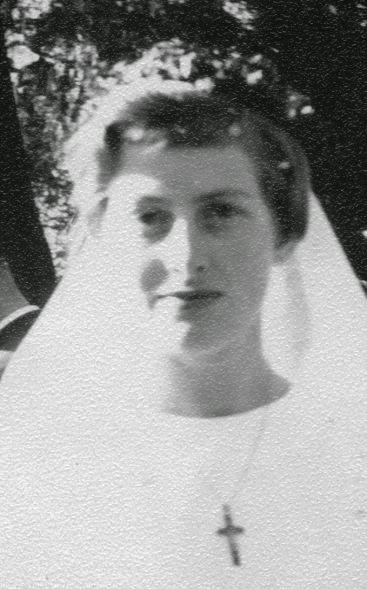
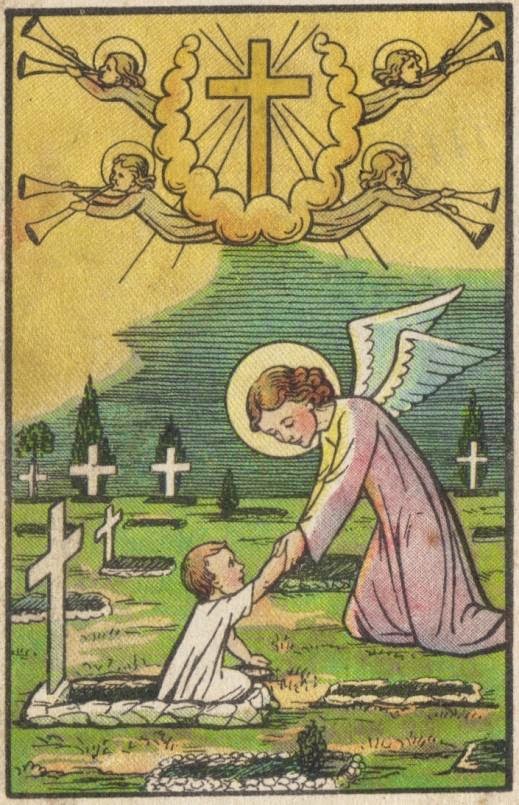

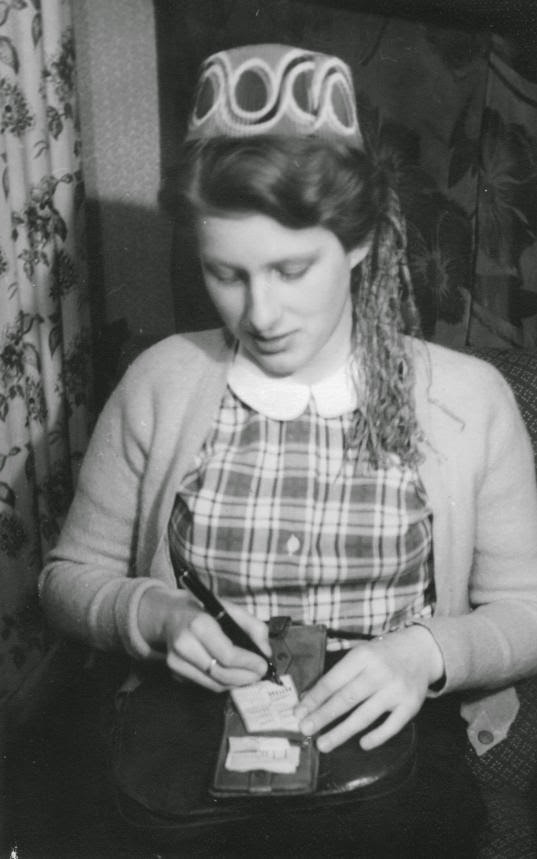
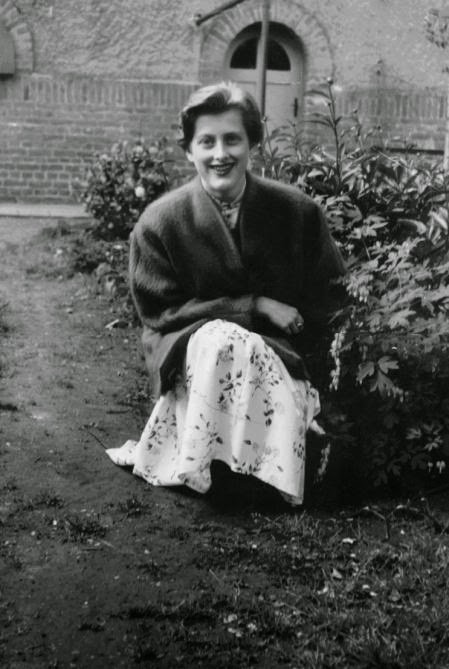

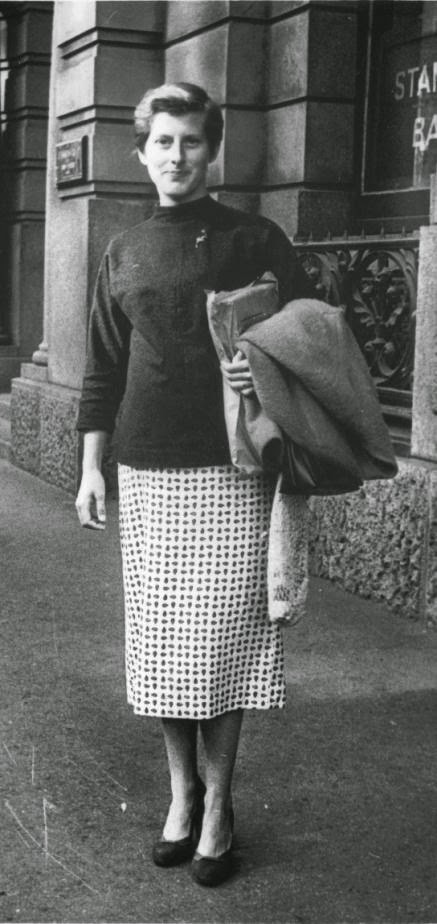




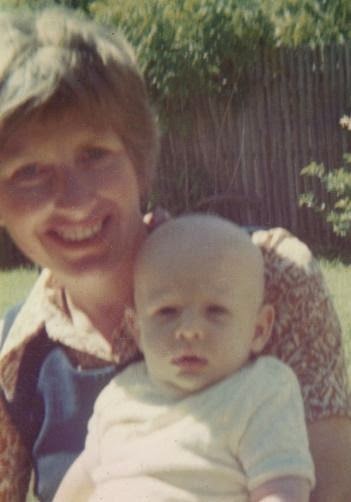



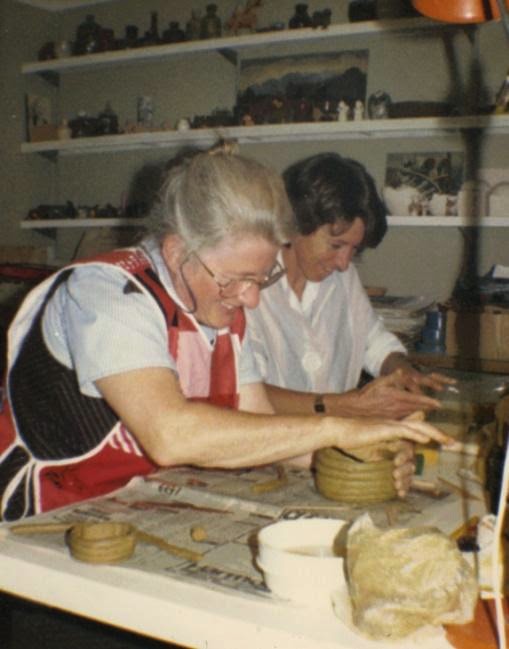



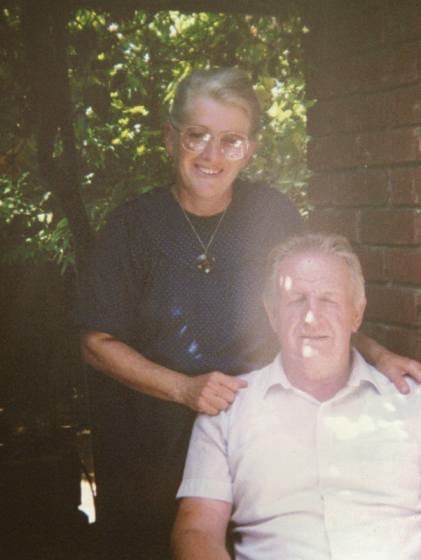







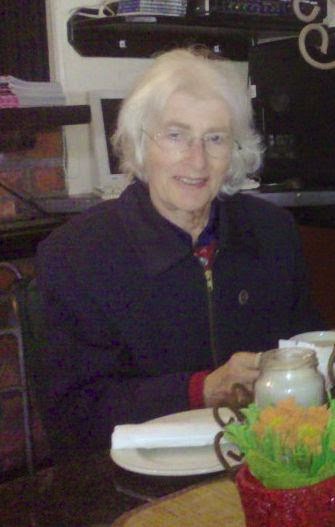
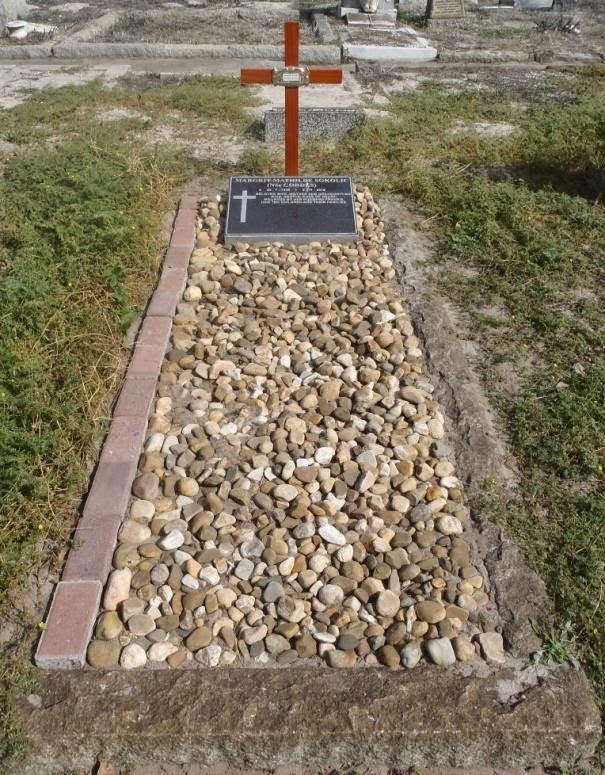

Thank you for this article on a truly wonderful Catholic lady who lived her life for her Saviour and never faltered in her love for the Church that He founded to lead her to salvation - the Holy Roman Catholic Church. Thank you Margrit and I look forward to meeting you again in eternity as once we met here on earth. Ben
ReplyDeleteVery inspirational. Many thanks for sharing. God Bless!
ReplyDeleteWhat a Saint!
ReplyDelete